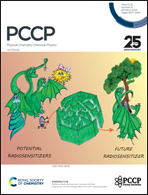Structural and decomposition analysis of TKX-50 with vacancy defects: insights from DFT and AIMD simulations†
Abstract
Vacancy defects are commonly present in crystals of energetic materials, and significantly influence the structural stability and decomposition mechanisms. However, there is a lack of profound understanding regarding the introduction of vacancy defects in energetic ionic salt, dihydroxylammonium 5,5′-bitetrazole-1,1′-dioxide (TKX-50). Due to the 1 : 2 ratio of anions to cations, TKX-50 possesses a more complex distribution of vacancy defects compared to traditional energetic materials. Based on the density functional theory method, the relatively favorable thermodynamic formation of vacancy defect distributions was revealed. The noncovalent interactions within the system, as well as the planarity of the anions, were investigated to understand the structural stability of TKX-50. Through ab initio molecular dynamics simulations, we discovered that vacancy defects can expedite the proton transfer during the initial decomposition stage of TKX-50 and affect the pathways of proton transfer. In the subsequent decomposition process, introduction of vacancy defects in the TKX-50 crystal leads to an earlier onset of ring-opening reactions and accelerates the appearance of decomposition products. The findings have the potential to provide insights into modeling vacancy defects in energetic ionic salts and reveal the impact of such defects on the structural stability and decomposition mechanisms of these materials.



 Please wait while we load your content...
Please wait while we load your content...